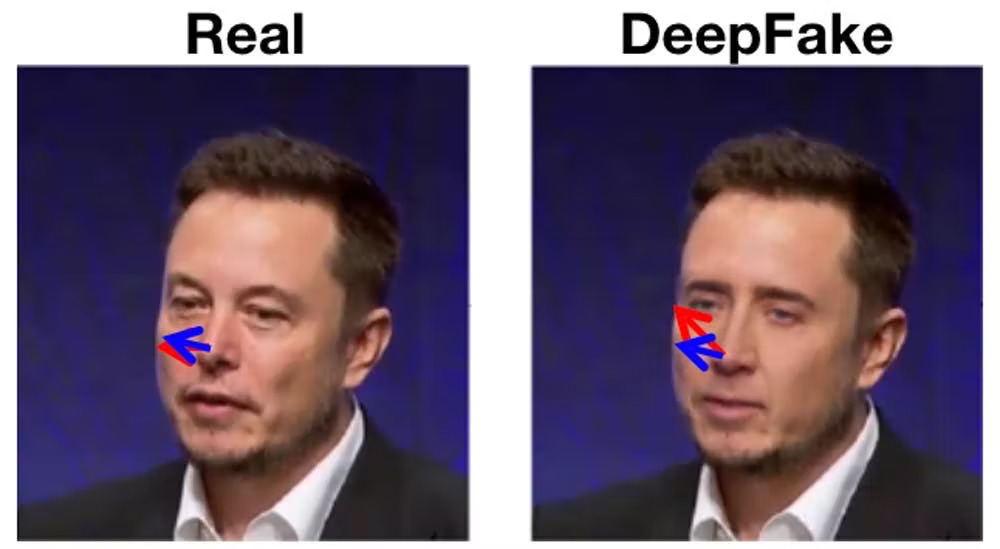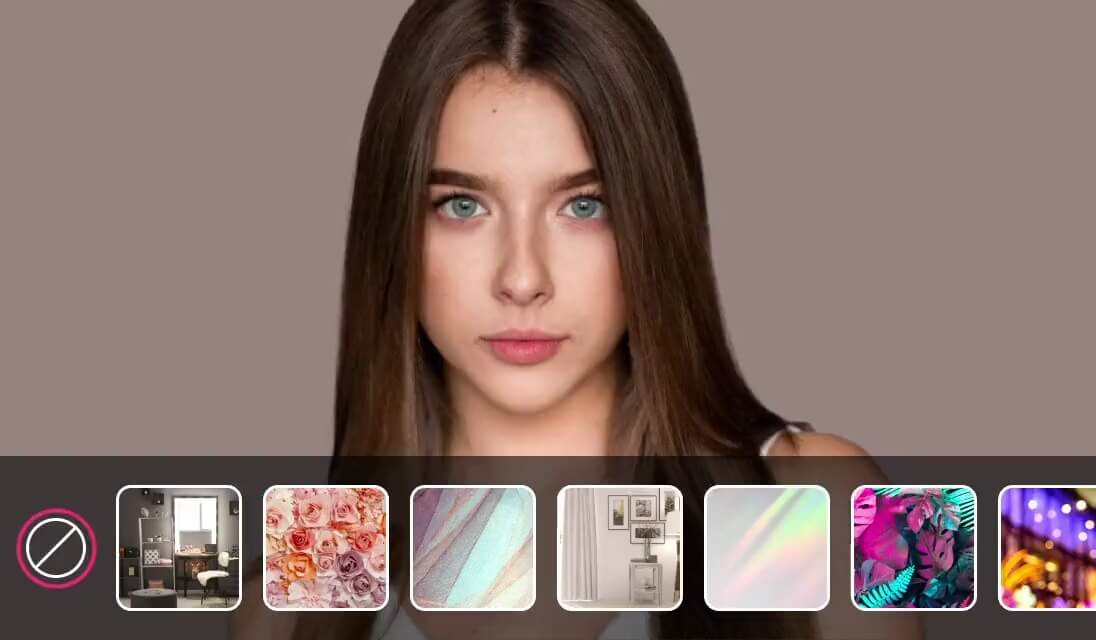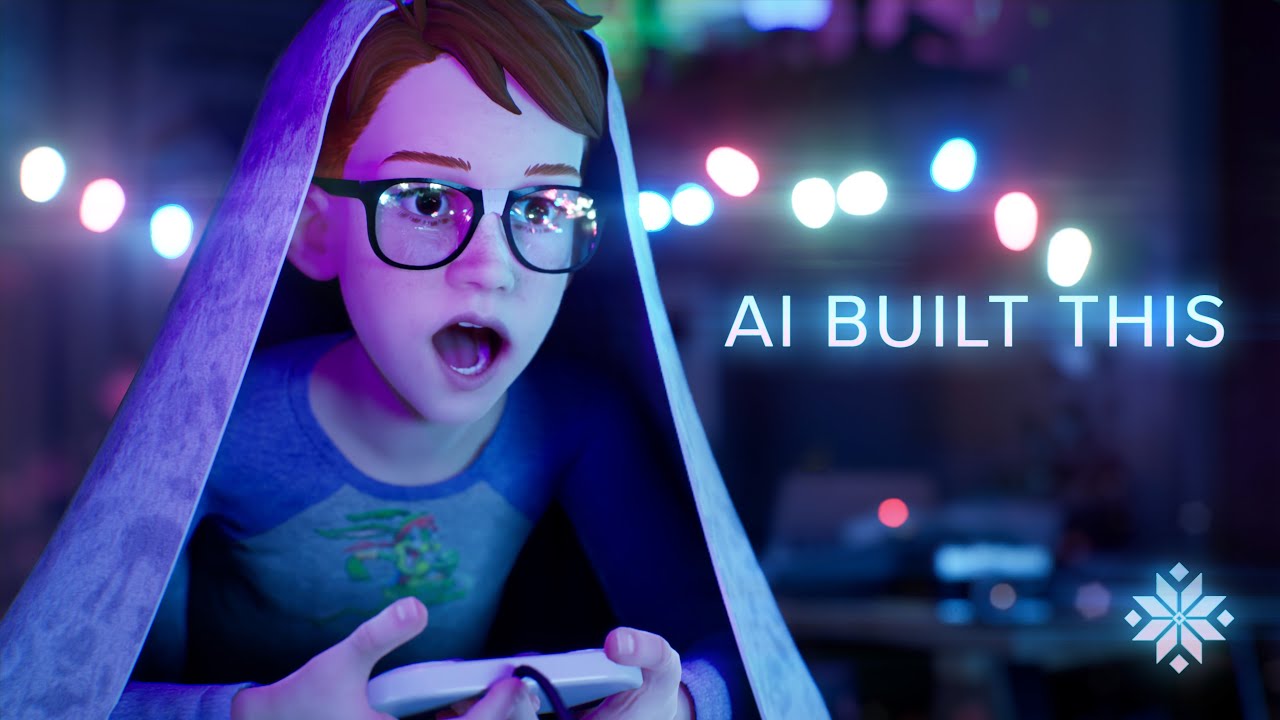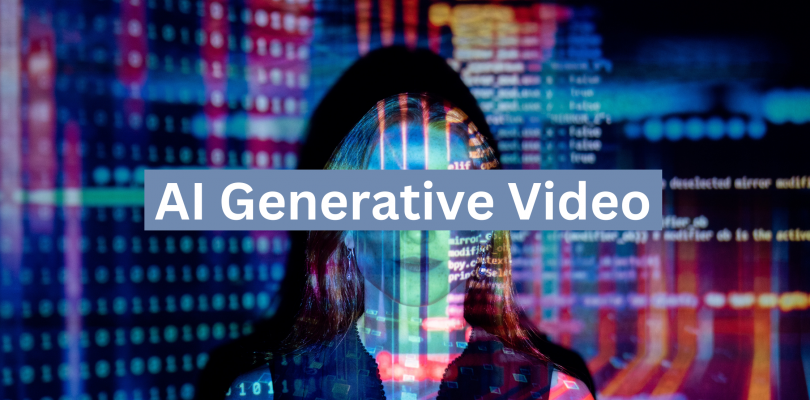Artificial intelligence (AI) has revolutionized the way we create and consume media. From music and images to text and video, AI is increasingly being used to generate content that is indistinguishable from that created by humans. One exciting area where AI is making a big impact is in generative video.
What is Generative video?
Generative video is a type of video content that is created by AI algorithms. These algorithms use machine learning techniques to analyze and understand existing video content, and then generate new video content that is similar in style and content. The result is a new video that is entirely unique and has never been seen before.
Creating a generative AI video involves training a machine learning model to generate new video content based on a set of inputs. The process can be complex and may require expertise in machine learning and video editing. Here are the general steps involved in creating a generative AI video:
- Collect and preprocess data: Collect a large dataset of videos that are similar to the type of video you want to generate. This dataset can be used to train the machine learning model. Preprocess the data to ensure that it is formatted in a way that the model can understand.
- Choose a generative AI model: Choose a generative AI model that is suitable for video generation. Popular models for video generation include Variational Autoencoders (VAEs), Generative Adversarial Networks (GANs), and Recurrent Neural Networks (RNNs).
- Train the model: Train the chosen generative AI model on your dataset. This involves feeding the model input frames and allowing it to generate new frames based on those inputs. The model will learn to generate new frames that are similar to the input frames.
- Generate new video content: Once the model is trained, you can use it to generate new video content. This involves inputting a starting frame and allowing the model to generate new frames based on that starting frame. These frames can then be combined to create a video.
- Edit the video: The generated video may not be perfect, so you may need to edit it to remove any unwanted frames or artifacts. You can also add sound, text, or other elements to the video to make it more interesting or informative.
- Refine the model: If the generated video is not of sufficient quality, you may need to refine the model by tweaking its parameters, collecting more data, or using a different model.
Creating a generative AI video can be a complex process, but with the right tools and expertise, it is possible to create stunning and unique videos that are generated by AI.
How to use AI generative video in marketing
Generative AI video can be a powerful tool in marketing, as it allows brands to create unique and engaging content that stands out from the crowd. Here are some ways that generative AI video can be applied to marketing:
- Personalized video ads: Using generative AI video, brands can create personalized video ads that are tailored to individual users. For example, a brand could generate a video ad that includes the user’s name, location, and interests, making the ad more relevant and engaging.
- Dynamic product videos: Brands can use generative AI video to create dynamic product videos that showcase their products in action. For example, a fashion brand could generate a video that shows a model wearing different outfits, allowing users to see how the clothes look and move in real life.
- Social media content: Generative AI video can be used to create unique and engaging content for social media platforms. For example, a brand could generate a video that highlights its products in a fun and creative way, such as using animated characters or special effects.
- Interactive video experiences: Brands can use generative AI video to create interactive video experiences that allow users to explore their products or services in a more immersive way. For example, a travel brand could generate a video that allows users to explore a destination in 360 degrees.
- A/B testing: Generative AI video can be used for A/B testing different ad creative concepts. Brands can generate multiple video versions with variations in visuals, audio, and messaging to test which resonates the most with their target audience.
Overall, generative AI video can be a valuable tool in marketing as it allows brands to create unique and engaging content that is tailored to their audience. By harnessing the power of AI, brands can create content that stands out and drives engagement, ultimately leading to increased brand awareness, customer acquisition, and revenue.
AI generative video for Deepfakes
There are many different applications for generative video. One of the most popular is in the creation of deepfakes. Deepfakes are videos that use AI to replace one person’s face with another person’s face. These videos are often used for entertainment purposes, but they can also be used for more sinister purposes, such as spreading fake news or propaganda.

Find software to create deepfake videos
AI virtual backgrounds for video calls
Another application of generative video is in the creation of virtual backgrounds for video calls. With more people working from home than ever before, virtual backgrounds have become a popular way to add a little bit of variety to video calls. AI algorithms can be used to generate virtual backgrounds that look realistic and are tailored to the specific needs of the user.

Generative video for game developers
Generative video can also be used in the creation of video games. Game developers can use AI algorithms to generate new levels, characters, and even entire game worlds. This allows for an almost unlimited amount of content to be generated, which can keep players engaged for longer periods of time.

Generative video for artists
One of the most exciting applications of generative video is in the creation of art. Artists can use AI algorithms to generate new and unique video content that can be used in installations or performances. This type of art is often referred to as “algorithmic art,” and it has become increasingly popular in recent years.
The dangers of using AI generative video
While generative video has many exciting applications, there are also some concerns about its use. One of the biggest concerns is the potential for misuse. As mentioned earlier, deepfakes can be used for nefarious purposes, such as spreading fake news or propaganda. There is also the concern that generative video could be used to create fake evidence in criminal cases.
Another concern is the potential for generative video to further automate the media industry. As AI algorithms become more advanced, they may be able to replace human workers in the media industry. This could lead to job losses and further concentration of power in the hands of a few large corporations.
AI generative video software
There are a number of ai video generator software platforms for anyone looking to create their own AI video or deep fake. To view AI generative software, visit our directory.
Conclusion
Generative video is a rapidly advancing field that has many exciting applications. From deepfakes and virtual backgrounds to video games and algorithmic art, the potential uses of generative video are almost limitless. However, there are also concerns about its use, particularly in regards to the potential for misuse and further automation of the media industry. As with any new technology, it is important to proceed with caution and carefully consider the potential risks and benefits.

